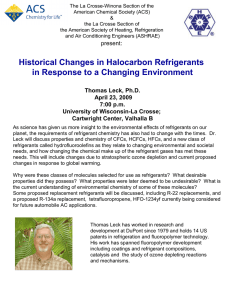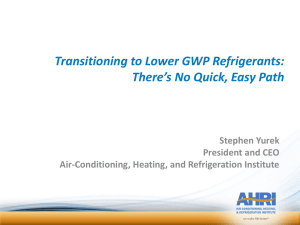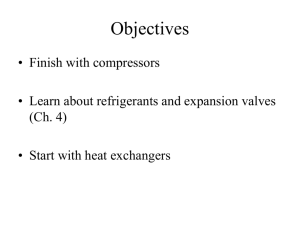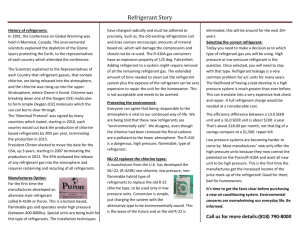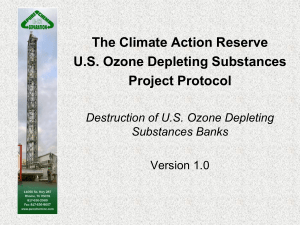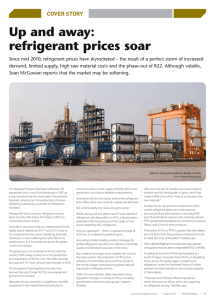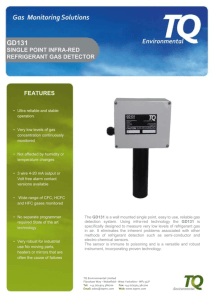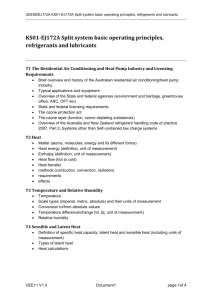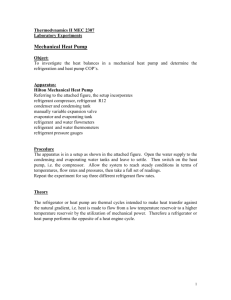Refrigerant Management Plan
advertisement
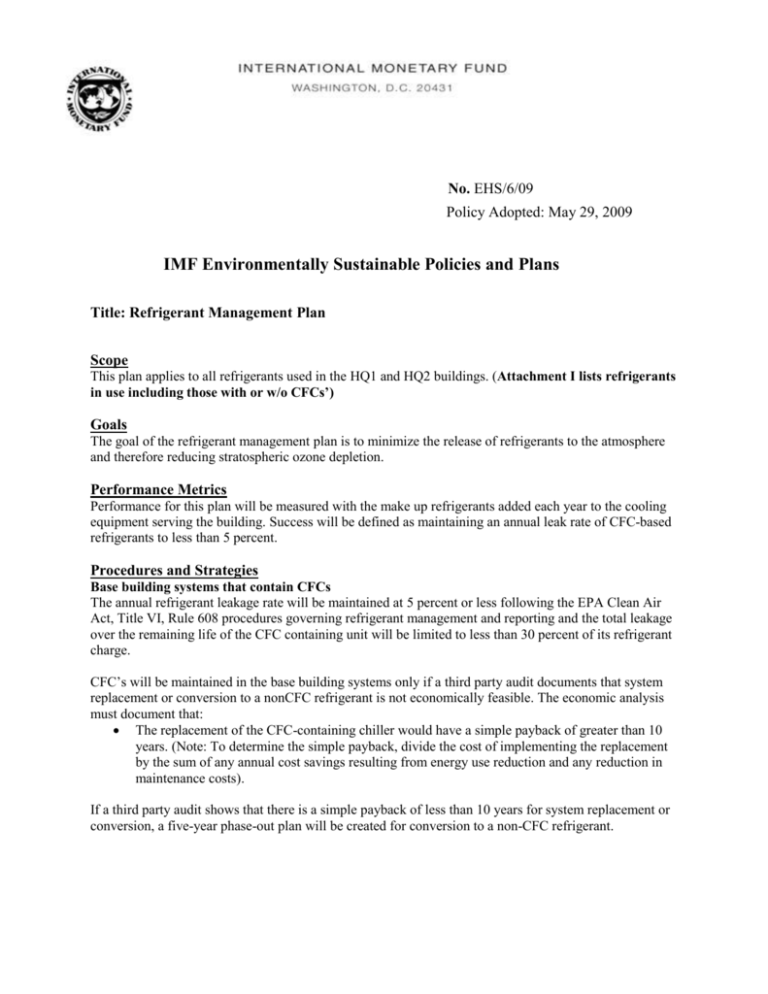
No. EHS/6/09 Policy Adopted: May 29, 2009 IMF Environmentally Sustainable Policies and Plans Title: Refrigerant Management Plan Scope This plan applies to all refrigerants used in the HQ1 and HQ2 buildings. (Attachment I lists refrigerants in use including those with or w/o CFCs’) Goals The goal of the refrigerant management plan is to minimize the release of refrigerants to the atmosphere and therefore reducing stratospheric ozone depletion. Performance Metrics Performance for this plan will be measured with the make up refrigerants added each year to the cooling equipment serving the building. Success will be defined as maintaining an annual leak rate of CFC-based refrigerants to less than 5 percent. Procedures and Strategies Base building systems that contain CFCs The annual refrigerant leakage rate will be maintained at 5 percent or less following the EPA Clean Air Act, Title VI, Rule 608 procedures governing refrigerant management and reporting and the total leakage over the remaining life of the CFC containing unit will be limited to less than 30 percent of its refrigerant charge. CFC’s will be maintained in the base building systems only if a third party audit documents that system replacement or conversion to a nonCFC refrigerant is not economically feasible. The economic analysis must document that: The replacement of the CFC-containing chiller would have a simple payback of greater than 10 years. (Note: To determine the simple payback, divide the cost of implementing the replacement by the sum of any annual cost savings resulting from energy use reduction and any reduction in maintenance costs). If a third party audit shows that there is a simple payback of less than 10 years for system replacement or conversion, a five-year phase-out plan will be created for conversion to a non-CFC refrigerant. 2 Selection of Any New Refrigerants for Use in the Base Building Equipment Refrigerants will be selected that minimize or eliminate the emission of compounds that contribute to ozone depletion and global warming. Any new refrigerants selected for use in base building HVAC&R equipment will comply with the following formula, which sets a maximum threshold for the combined contributions to ozone depletion and global warming potential: LCGWP + LCODP x 105 Where: LCODP = [ODPr x (Lr x Life +Mr) x Rc]/Life LCGWP = [GWPr x (Lr x Life +Mr) x Rc]/Life LCODP: Lifecycle Ozone Depletion Potential (lbCFC11/Ton-Year) LCGWP: Lifecycle Direct Global Warming Potential (lbCO2/Ton-Year) GWPr: Global Warming Potential of Refrigerant (0 to 12,000 lbCO2/lbr) ODPr: Ozone Depletion Potential of Refrigerant (0 to 0.2 lbCFC11/lbr) Lr: Refrigerant Leakage Rate (0.5% to 2.0%; default of 2% unless otherwise demonstrated) Mr: End-of-life Refrigerant Loss (2% to 10%; default of 10% unless otherwise demonstrated) Rc: Refrigerant Charge (0.5 to 5.0 lbs of refrigerant per ton of cooling capacity) Life: Equipment Life (10 years; default based on equipment type, unless otherwise demonstrated) If there are multiple types of base building equipment, a weighted average of all base building level HVAC&R equipment will be used on new refrigerant selection using the following formula: 5 [ ) x Qunit ] / Qtotal Where: Qunit = Cooling capacity of an individual HVAC or refrigeration unit (Tons) Qtotal = Total cooling capacity of all HVAC or refrigeration (Note: Small HVAC units (defined as containing less than 0.5 lbs of refrigerant), and other equipment such as standard refrigerators, small water coolers, and any other cooling equipment that contains less than 0.5 lbs of refrigerant, are not considered part of the “base building” system and are not subject to the requirements of this credit). For Fire Suppression Systems Fire suppression systems in use in the building will not contain ozone-depleting substances (CFCs, HCFCs or Halons). Responsible Party Party responsible is the Fund’s Property Manager reporting to the Chief, Operations and Maintenance Section, Facilities Management Division who perform maintenance work on the building grounds. Time Period This plan will be put in place for the life of the building, receiving updates yearly to maintain a high standard in environmental policy. This policy will be revised as necessary to meet or exceed the LEEDEB requirements.

